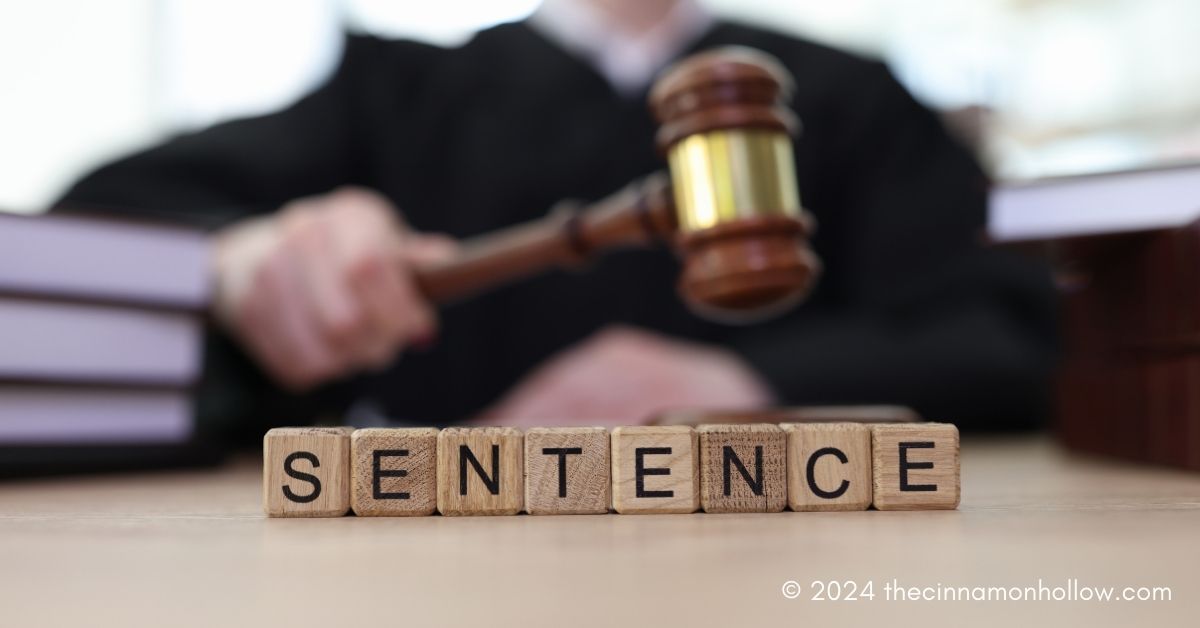Criminal sentencing is a cornerstone of the justice system, serving to mete out appropriate consequences for unlawful behavior. It is a multifaceted process, influenced by various factors and considerations. Whether you’re directly involved in a legal case or simply seeking to understand the workings of the justice system, familiarity with sentencing laws is invaluable.
Types of Sentences
Sentencing in criminal cases encompasses a spectrum of options, each tailored to fit the circumstances of the offense and the offender.
Incarceration: This most commonly involves serving time in either a jail or a prison facility. Jail sentences are typically for shorter durations and are administered for less severe offenses, while prison sentences are for more serious crimes.
Probation: Instead of serving time behind bars, a defendant may be placed on probation, during which they are subject to specific conditions such as regular check-ins with a probation officer, adherence to curfews, and participation in rehabilitative programs.
Fines: Monetary penalties are often imposed in conjunction with or in lieu of incarceration. Fines serve both as a form of punishment and as a means of restitution to society.
Community Service: Offenders may be required to perform unpaid work for the benefit of their community, serving to both punish and rehabilitate.
Rehabilitation Programs: Some sentences may involve participation in programs aimed at addressing underlying issues such as substance abuse or anger management, with the goal of facilitating the offender’s reintegration into society.
Each type of sentence carries its own set of implications for the offender and society at large, with considerations of deterrence, rehabilitation, and public safety playing central roles in sentencing decisions.
Factors Affecting Sentencing
The sentencing process is not arbitrary; rather, it is guided by a set of principles and considerations designed to ensure fairness and proportionality.
Severity of the Crime: The nature and gravity of the offense committed are primary factors in determining the appropriate sentence. More serious crimes such as assault, domestic violence, or sex crimes generally warrant harsher penalties.
Defendant’s Criminal History: A defendant’s past criminal behavior is taken into account, with repeat offenders often facing stiffer penalties.
Mitigating or Aggravating Circumstances: Factors such as motive, intent, and remorse can mitigate or exacerbate the severity of the offense and thus influence the sentencing outcome.
Victim Impact Statements: The impact of the crime on the victim and their loved ones is considered, providing an opportunity for their voices to be heard in the sentencing process.
Sentencing Guidelines: Many jurisdictions have established sentencing guidelines or statutory mandates that provide a framework for judges to determine appropriate sentences based on the specific circumstances of each case.
Balancing these factors, judges strive to impose sentences that both punish the offender and protect the public while also offering opportunities for rehabilitation and reintegration into society.
Mandatory Minimum Sentences
Mandatory minimum sentencing laws require judges to impose a predetermined minimum sentence for certain offenses, regardless of individual circumstances. While proponents argue that mandatory minimums promote consistency and deterrence, critics contend that they can result in unjust outcomes, disproportionately affecting marginalized communities and perpetuating mass incarceration.
Sentencing Alternatives
Recognizing the limitations of traditional punitive measures, many jurisdictions have implemented alternative sentencing programs aimed at addressing the root causes of criminal behavior and reducing recidivism rates.
Drug Courts: These specialized courts focus on diverting individuals with substance abuse issues away from the traditional criminal justice system and into treatment programs.
Mental Health Courts: Designed for individuals with mental health issues, these courts emphasize treatment and rehabilitation over incarceration.
Restorative Justice Programs: These programs prioritize repairing the harm caused by the offense through dialogue, mediation, and restitution, with a focus on healing and reconciliation.
Diversion Programs: Diversion programs offer eligible offenders the opportunity to avoid formal prosecution by completing specified requirements, such as community service or counseling.
By offering alternatives to incarceration, these programs seek to address the underlying factors contributing to criminal behavior and promote rehabilitation and positive change.
Criminal sentencing is a complex and multifaceted process, shaped by a myriad of factors and considerations. By understanding the principles and mechanisms that govern sentencing decisions, individuals can better navigate the legal system and advocate for fair and just outcomes. Whether through traditional punitive measures or innovative alternatives, sentencing aims to balance punishment with rehabilitation, deterrence with compassion, and accountability with the potential for positive change.
We are not lawyers and this is in no way intended to be used as legal advice . We cannot be held responsible for your results. Always do your own research and seek professional legal help.






